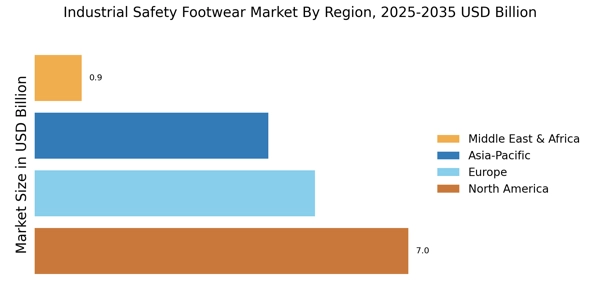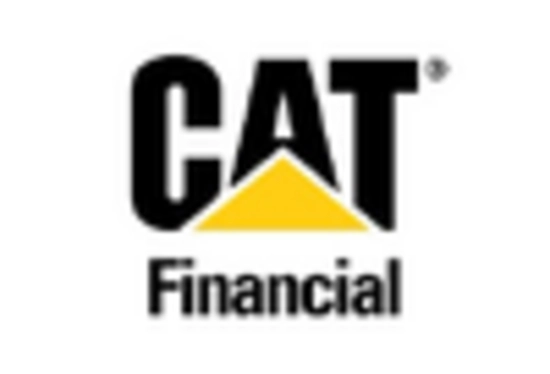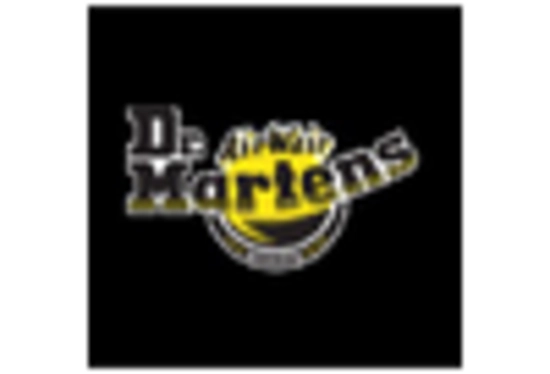Expansion of End-User Industries
The Industrial Safety Footwear Market is benefiting from the expansion of end-user industries, including construction, manufacturing, and logistics. As these sectors continue to grow, the demand for safety footwear is expected to rise correspondingly. For example, the construction industry is projected to witness substantial growth, driven by infrastructure development and urbanization. This growth necessitates the use of safety footwear to protect workers from various hazards on job sites. Moreover, the logistics sector is increasingly recognizing the importance of safety footwear to prevent injuries during material handling and transportation. As a result, the expansion of these end-user industries is likely to create new opportunities for manufacturers within the Industrial Safety Footwear Market, fostering competition and innovation.
Growing Awareness of Workplace Safety
The Industrial Safety Footwear Market is experiencing growth due to the increasing awareness of workplace safety among employers and employees. As industries recognize the importance of protecting workers from potential hazards, there is a heightened focus on providing appropriate safety footwear. This awareness is driven by various factors, including rising accident rates and the associated costs of workplace injuries. According to recent data, workplace injuries can lead to significant financial losses for companies, prompting them to invest in safety measures. Consequently, the demand for industrial safety footwear is expected to rise as organizations seek to mitigate risks and enhance employee safety. This trend is likely to foster innovation within the Industrial Safety Footwear Market, as manufacturers develop new products that meet evolving safety standards and consumer expectations.
Regulatory Compliance and Safety Standards
The Industrial Safety Footwear Market is significantly influenced by stringent regulatory compliance and safety standards. Governments and regulatory bodies have established guidelines to ensure worker safety across various sectors, including construction, manufacturing, and healthcare. These regulations mandate the use of safety footwear that meets specific performance criteria, such as slip resistance, puncture protection, and electrical hazard protection. As a result, companies are compelled to invest in compliant safety footwear, driving demand within the Industrial Safety Footwear Market. The increasing emphasis on workplace safety valve is expected to propel market growth, as organizations prioritize employee well-being and adhere to legal requirements. Furthermore, the enforcement of these regulations is likely to lead to a rise in the adoption of advanced safety footwear technologies, enhancing overall market dynamics.
Technological Advancements in Footwear Design
Technological advancements play a pivotal role in shaping the Industrial Safety Footwear Market. Innovations in materials and design have led to the development of lightweight, durable, and comfortable safety footwear. For instance, the introduction of composite toe caps and advanced cushioning systems has enhanced the performance of safety shoes, making them more appealing to workers. Additionally, the integration of smart technology, such as sensors and tracking devices, is gaining traction within the market. These advancements not only improve safety but also enhance user experience, potentially increasing adoption rates. As companies strive to provide their employees with the best protective gear, the demand for technologically advanced safety footwear is likely to surge, further propelling the Industrial Safety Footwear Market.
Sustainability Trends in Footwear Manufacturing
Sustainability trends are emerging as a significant driver in the Industrial Safety Footwear Market. With growing environmental concerns, manufacturers are increasingly adopting sustainable practices in footwear production. This includes the use of eco-friendly materials, such as recycled plastics and organic textiles, which appeal to environmentally conscious consumers. Additionally, companies are focusing on reducing their carbon footprint by implementing energy-efficient manufacturing processes. As sustainability becomes a priority for both consumers and businesses, the demand for eco-friendly safety footwear is likely to increase. This shift towards sustainable practices not only enhances brand reputation but also aligns with regulatory expectations, further influencing the dynamics of the Industrial Safety Footwear Market.


















Leave a Comment